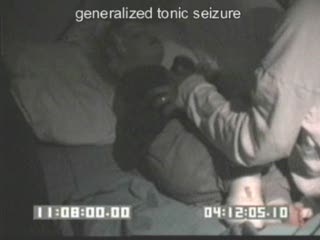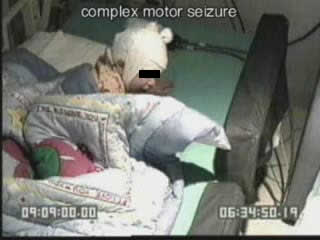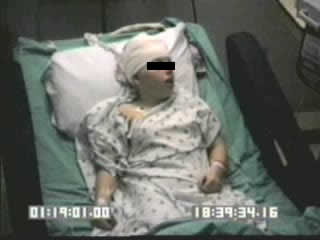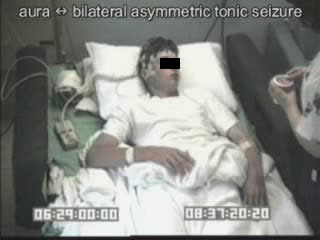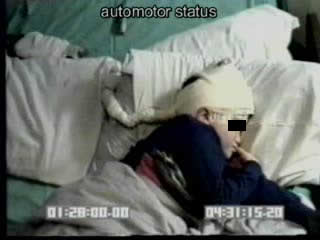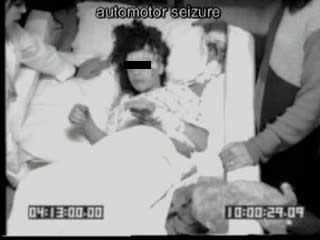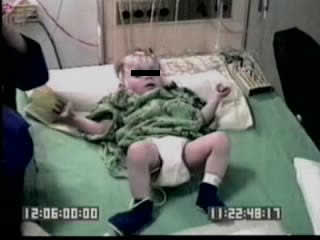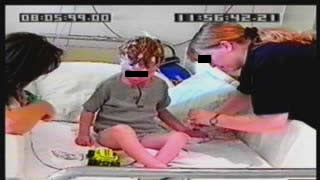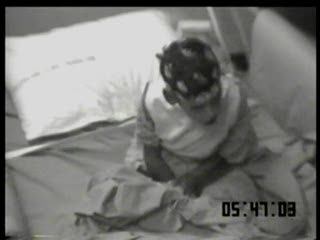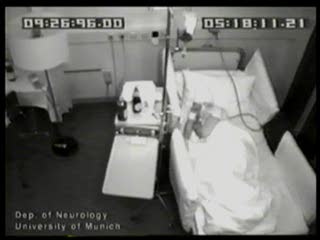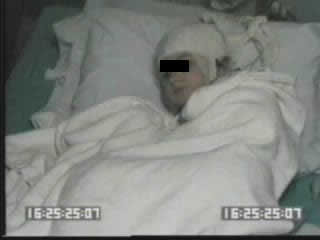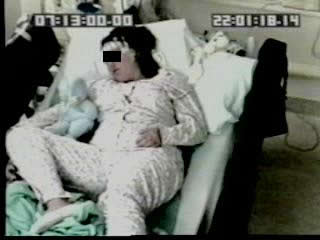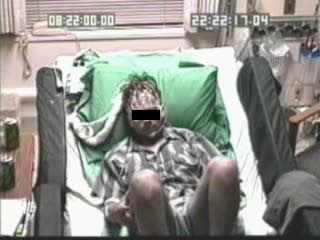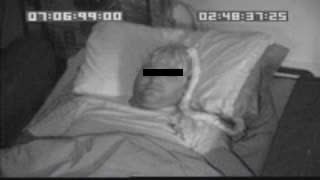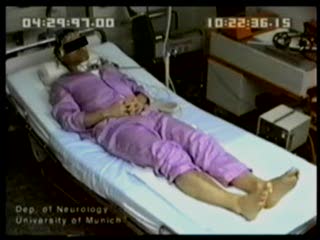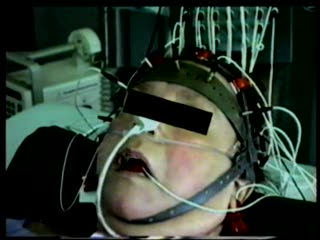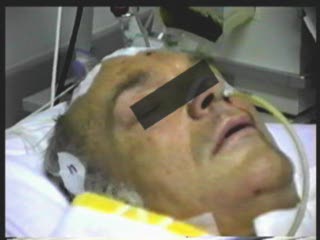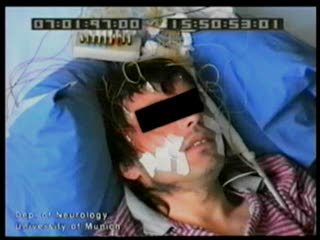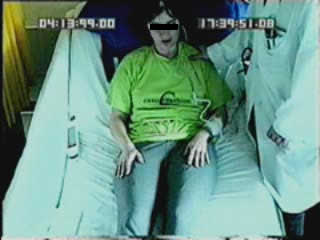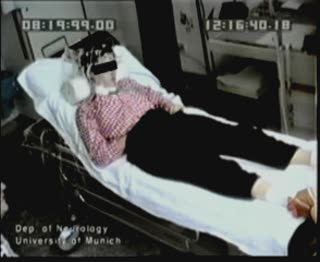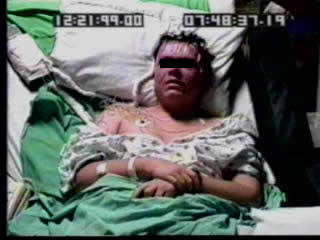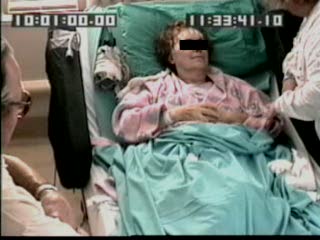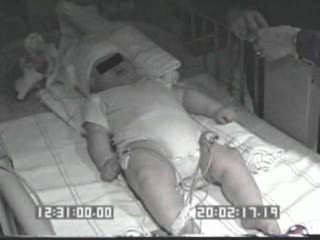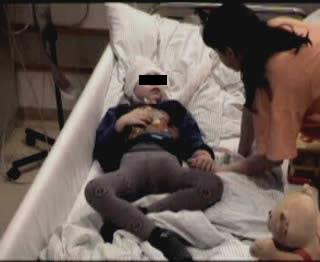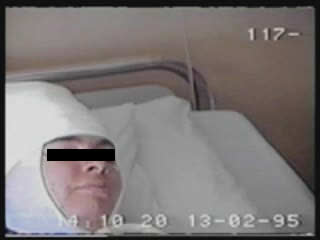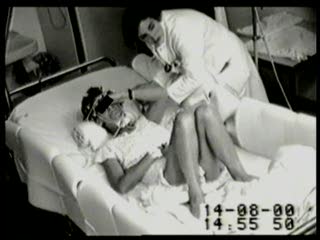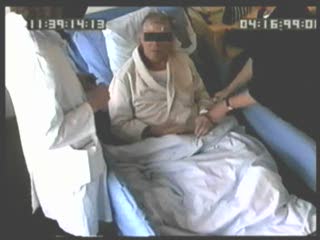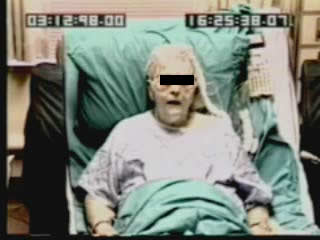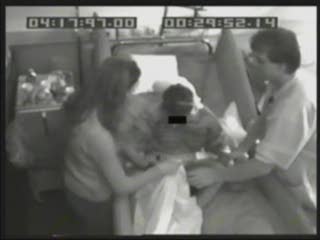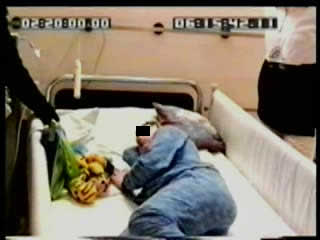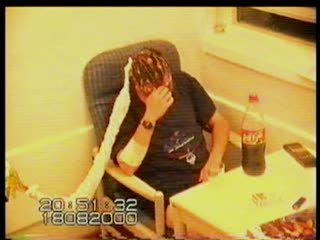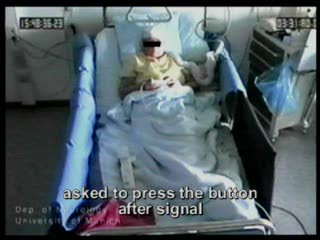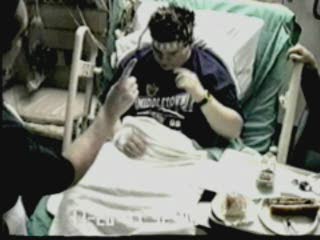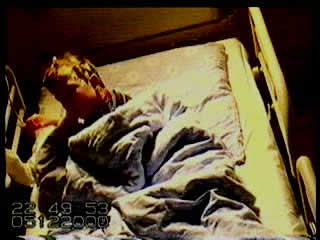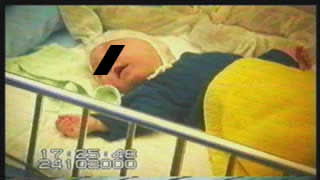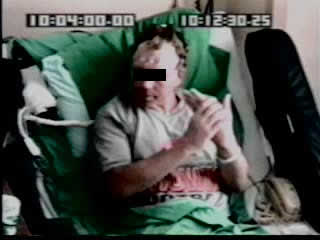Epileptic Disorders
MENUA semiological classification of status epilepticus Volume 7, issue 1, March 2005
Auteur(s) :, Sabine Rona1,5,*, Felix Rosenow2, Stephan Arnold3, Mar Carreño4,5, Beate Diehl5, Alois Ebner6, Brita Fritsch2, Hajo M Hamer2, Hans Holthausen7, Susanne Knake2, Bernd Kruse8, Soheyl Noachtar3, Tom Pieper7, Ingrid Tuxhorn6, Hans O Lüders5
1Epilepsy Center, Department of Neurosurgery, University of Freiburg, Germany
2Interdisciplinary Epilepsy Center, Philipps-University Marburg, Germany
3University of Munich, Germany
4Unidad de Epilepsia, Hospital Clinico y Provincial, Barcelona, Spain
5The Cleveland Clinic Foundation, Cleveland/Ohio, USA
6Epilepsiezentrum Bethel, Germany
7Behandlungszentrum Vogtareuth, Germany
8University of Giessen, Germany
Article reçu le 28 Juillet 2004, accepté le 15 Decembre 2004
The first descriptions of status epilepticus date back to antiquity, but it was only in the 19th century that status was recognized as an entity distinct from “ordinary” seizures (Shorvon 1994a). The first systematic analysis of the clinical and pathologic features of status epilepticus was provided by Clark and Prout at the beginning of the 20th century (Clark and Prout 1903-1904), who described a considerable variety of clinical forms and typical evolutions, yet reserved the term status epilepticus for generalized convulsive status, deemed “the maximum expression of epilepsy”. This view was shared by virtually all of their contemporaries and remained unchallenged until the mid-20th century, although non-convulsive status episodes had been meticulously described and identified as such already much earlier, as laid out by Shorvon in his comprehensive book on the subject (Shorvon 1994b). Change came about slowly even after the invention of electroencephalography by Hans Berger in 1924, leading to the first known EEG-recorded episode of petit-mal (absence) status by Lennox in 1945 (Lennox 1945) and of what would later be called complex partial status of temporal lobe origin by Gastaut, Roger and Roger in 1956 (Gastaut et al. 1956).A milestone was set by the tenth European conference on epileptology and clinical neurophysiology held in Marseille in 1967 (Gastaut 1967), which was dedicated exclusively to status epilepticus. At that time, status epilepticus was newly defined as "a condition characterized by an epileptic seizure which is so frequently repeated or so prolonged as to create a fixed and enduring epileptic condition" (Gastaut 1970). This was only slightly modified in 1981 (Commission on Classification and Terminology of the International League Against Epilepsy 1981), when the International League against Epilepsy (ILAE) defined status epilepticus as "a seizure that persists for a sufficient length of time or is repeated frequently enough that recovery between attacks does not occur". Neither definition included a minimal duration of the event, but most experts at the time shared Gastaut’s opinion that it should be at least 30 minutes (Gastaut 1967). This criterion was later included in an official guideline by the EFA Working Group on Status Epilepticus (Working Group on Status Epilepticus 1993). In the past five years however, several authors have started to use operational definitions shortening this time-frame to 5-20 minutes, depending on age and seizure type (Lowenstein et al. 1999). This recommendation was based on closed-circuit video-EEG recordings, which made it possible to demonstrate that the majority of self-limiting seizures last no longer than a few minutes (Theodore et al. 1994, Lüders et al. 2000). These facts are taken into account in the most recent definition elaborated by the ILAE Task Force on Classification and Terminology (Blume et al. 2001), which defined status as "a seizure that shows no clinical signs of arresting after a duration encompassing the great majority of seizures of that type in most patients or recurrent seizures without interictal resumption of baseline central nervous system function", the latter including not just a disturbance of consciousness, but any kind of neurological deficit persisting in-between seizures. Again however, a precise time limit is not stated.All previously cited definitions imply, as originally stated by Gastaut (Gastaut 1967, 1983), that there are as many types of status as there are types of seizures. At the 1962 and 1964 Marseilles conferences, this concept was translated into a proposal for a classification of status epilepticus matching the seizure classification. This was first published in 1967 (Gastaut 1967) and later became an addendum to the international classification of epileptic seizures published in 1970 (Gastaut 1970). Using both clinical and EEG criteria, status epilepticus was subdivided into generalized convulsive status (tonic-clonic, tonic, clonic and myoclonic), generalized non-convulsive (absence) status, elementary partial status (with several subtypes), complex partial status, and unilateral/erratic status epilepticus, the latter being specific for neonates and small children. In the international seizure classification from 1981 (Commission on Classification and Terminology of the International League Against Epilepsy 1981), the classification of status epilepticus, still confined to the addendum, was simplified further, dropping the “unilateral” category and leaving only a distinction between “partial” and “generalized” status episodes.In the scientific literature, the classification of status epilepticus is still limited mostly to the distinction between “convulsive” (i.e. displaying ictal motor manifestations) and “non-convulsive” status (i.e. status that does not include ictal motor manifestations). This serves a practical purpose, since uncontrolled generalized convulsive status may have life-threatening consequences and therefore requires immediate treatment, but does in no way reflect the actual complexity and semiological variability of status epilepticus.More recent attempts at classification, which incorporate all kinds of semiological, anatomic and etiological information into one single classification of all types of status epilepticus (Shorvon 1994b), or at least, for the classification of non-convulsive status epilepticus (Kaplan 2002), are interesting in their completeness but become exceedingly complicated, so that their everyday use is difficult.In 2001, the group of experts forming the ILAE Task Force on Classification and Terminology “agreed that it would not be possible to replace the current international classifications with similar and updated classifications that would be universally accepted and meet all the clinical and research needs such a formal organizational system would be expected to provide” (Engel 2001). They proposed a diagnostic scheme or framework which expressly encourages the development of additional, more detailed classification systems for specific purposes. In that proposal, status epilepticus is treated in an even more reductive manner than in previous classifications (table 1)( Table 1 ), which we feel is inadequate to represent the true variety of symptoms encountered in status epilepticus.In this article, we present a proposal for a Semiological Classification of Status Epilepticus (SCSE) (table 2)( Table 2 ), which represents an adaptation of the Semiological Seizure Classification (SSC) originally proposed by Lüders and colleagues (Lüders et al. 1993, Lüders et al. 1998, Bautista and Lüders 2000). The SSC has now been in use in several epilepsy centers for more than a decade and has proven to be a valid approach to the classification of epileptic seizures. We would like to emphasize that the SCSE, just as the SSC, is meant to define one component of a comprehensive epilepsy classification, namely to categorize the semiological characteristics of the ictal events.Thanks to the development of closed-circuit video-EEG telemetry, which has enabled us to document the semiological and electroencephalographic evolution of entire episodes of status epilepticus, we can also demonstrate that there are indeed “as many types of status as there are epileptic seizures”, and probably more. The material constituting the basis of this article has been collected over several years in the participating epilepsy centers. More than 100 status episodes documented with video-EEG recordings have been analysed in detail, and exemplary cases are presented on the accompanying CD in order to illustrate the wide variety of semiological features and temporal evolutions of status epilepticus, and to demonstrate the convenience of the classification provided by the SCSE.
Outline of a semiological classification of status epilepticus
The Semiological Classification of Status Epilepticus (SCSE) is based on the same principles as the Semiological Seizure Classification (SSC), focusing on the main clinical manifestations and the evolution of the episode. As previously mentioned, opinions differ regarding the required duration of a seizure in order to be called “status”, and the most recent definition provided by the ILAE does not include a time limit (Blume et al. 2001). Recent research results and our own observations suggest however, that self-limiting seizures rarely last longer than a few minutes (Theodore et al. 1994, Lüders et al. 2000). For practical purposes, we have therefore decided to set an arbitrary time limit of ten minutes of continuous or intermittent seizure activity, beyond which we would classify a seizure episode as status epilepticus (SE).
In the same way as for individual seizures, the clinical manifestations of SE can be subdivided into semiological components and classified along three axes:
- – The type of brain function predominantly compromised by the seizure activity. This may involve one of the following spheres, each comprising several subcategories:
- – the sensory sphere,
- – the autonomic sphere,
- – the cognitive sphere,
- – the motor sphere.
All possible subcategories will be described below in more detail. Each component should be defined in as much detail as possible according to the predominant clinical manifestation.
- – The body part involved, adding, wherever possible, any of the following “somatotopic modifiers”:
- – generalized, i.e. involving proximal and distal portions of both sides of the body in a symmetric and synchronous fashion,
- – bilateral asymmetric, i.e. bilateral with predominant involvement of one side of the body or asymmetric involvement of different body parts,
- – axial, i.e. involving mainly the head, neck, trunk, or the proximal part of the extremities (e.g., the shoulders),
- – left or right, i.e. involving only one side of the body, which should be stated,
- – or involving a single body part which should be specified accordingly (e.g., left face, right eye, left eyelid, right arm, etc.).
- – The evolution in time, considering the long duration and complexity of many status episodes. Status epilepticus may:
- – be characterized by continuous or intermittent seizure activity;
- – comprise semiological components of different length which by themselves could constitute a seizure, occurring at different points in time.
- – All status episodes should be designated with the term “SE:” followed by the respective status component(s);
- – A component consisting of continuous seizure activity of more than 10 minutes duration should be termed “status”. Example: SE: generalized tonic-clonic status;
- – Repeated seizures occurring over a period of more than 10 minutes should be termed “seizures” (plural). Example: SE: left arm myoclonic seizures;
- – Single components with a distinct semiology and a duration of less than 10 minutes should be termed “seizure” or “aura”, respectively. However, in this case, the total duration of the episode must exceed 10 minutes in order to meet the temporal requirement for “status”. Example: SE: abdominal aura → automotor status;
- – Single components succeeding each other should be linked by arrows (see above), including double-headed arrows for components that alternate or occur in a reverberating fashion. Example: SE: bilateral asymmetric tonic seizures ↔ generalized tonic-clonic seizure;
- – Single components felt to be equally important and occurring simultaneously can be linked with the sign “+”. Example: SE: visual aura status + left eye versive seizures;
- – Brackets can be added when necessary to describe even more complicated status patterns (see section on “complex status evolutions”);
- – The term “LOC” may be added to each single component to indicate loss of consciousness at this specific point in time. Example: automotor status (LOC) → right versive status.
Table 1 Proposal of the ILAE Commission on Classification and Terminology 2001.
|
Continuous seizure types |
|
Generalized status epilepticus |
|
Generalized tonic-clonic status epilepticus |
|
Clonic status epilepticus |
|
Absence status epilepticus |
|
Tonic status epilepticus |
|
Myoclonic status epilepticus |
|
Focal status epilepticus |
|
Epilepsia partialis continua of Kojevnikov |
|
Aura continua |
|
Limbic status epilepticus (psychomotor status) |
|
Hemiconvulsive status with hemiparesis |
Table 2 Proposal for a Semiological Classification of Status Epilepticus (SCSE).
|
Aura status |
|
Somatosensory aura status |
|
Visual aura status |
|
Auditory aura status |
|
Olfactory aura status |
|
Gustatory aura status |
|
Psychic aura status |
|
Autonomic aura status |
|
Abdominal aura status |
|
Autonomic status |
|
Dyscognitive status |
|
Dialeptic status |
|
Delirious status |
|
Aphasic status |
|
Motor status |
|
Simple motor status |
|
Tonic status |
|
Epileptic spasm status |
|
Versive status |
|
Myoclonic status |
|
Clonic status |
|
Tonic-clonic status |
|
Complex motor status |
|
Automotor status |
|
Hypermotor status |
|
Gelastic status |
|
Special status |
|
Atonic status |
|
Astatic status |
|
Hypomotor status |
|
Akinetic status |
|
Negative myoclonic status |
Complex status evolutions
Inherent in the concept that there are as many types of status as there are types of seizures, is the idea that SE may present all kinds of different evolutions. This hypothesis has been confirmed by the observations made in the participating centers while recording the status episodes which are presented on the accompanying CD. With the SCSE, it is possible to describe even complex clinical manifestations in a comprehensible way without losing essential information.
For example, status episodes may:
- – begin with a seizure component which then evolves to a status with different semiology. Example: SE: complex motor seizure → hypomotor status (case 34);
- – begin with a status and continue with another status. Example: SE: abdominal aura status → automotor status (case 3);
- – begin with a status, continue with a seizure, then evolve to another status. Example: SE: automotor status (LOC) → right versive seizure → right clonic status (case 35);
- – consist of two alternating seizure components. Example: SE: generalized tonic seizures ↔ generalized clonic seizures (case 36);
- – consist of a status component alternating with a seizure component. Example: SE: bilateral asymmetric tonic seizures ↔ generalized tonic-clonic seizure (case 15);
- – begin with a status comprised of two alternating seizure components which then evolves to another status. Example: SE: [aura ↔ bilateral asymmetric tonic seizure] → left clonic status (case 37);
- – consist of a sequence of several seizure components. Examples: SE: automotor seizure → left versive seizure (LOC) → left clonic seizure → right clonic seizure (case 38).
However, as previously suggested in the SSC, we would recommend limiting the total number of components to a maximum of four.
Syndromic classification
In addition to the classification of the status episode, we believe it is important to provide a brief synopsis of the most important clinical features of any particular patient, considering all available information provided by the patient’s history, neurological examination, EEG, neuroimaging, etc. This can be done conveniently using an adaptation of the scheme previously outlined in the SSC, trying to define:
- – the epilepsy syndrome,
- – the epileptogenic zone,
- – the etiology,
- – the semiology of the patient’s habitual seizures,
- – the status trigger,
- – related medical conditions.
The following example (case 20 from the CD) may illustrate the concept.
This is a 30-year-old male with primary generalized epilepsy, mild mental retardation and a family history of epilepsy. He presented with generalized myoclonic status epilepticus after treatment with phenytoin.
- – epilepsy syndrome: idiopathic generalized epilepsy,
- – epileptogenic zone: generalized,
- – etiology: idiopathic,
- – seizures:
- – 1. Generalized myoclonic seizures,
- – 2. Dialeptic Seizures,
- – status: SE: generalized myoclonic seizures,
- – status trigger: medication error,
- – related conditions:
- – mild mental retardation,
- – family history of epilepsy.
Definition of terms used in the SCSE
We would now like to define the terms we use to describe the different semiological components of status epilepticus, illustrated by videotaped examples whenever available. Most of the definitions reflect current use in neurological science and/or have been applied in the SSC for many years; some definitions are new and incorporate suggestions provided by the more recent proposal for a Glossary of Descriptive Terminology for Ictal Semiology published by the ILAE (Blume et al. 2001).
Aura status (cases 1-3 + 18)
By definition, these types of status encompass only subjective sensations described by the patient, not accompanied by any objective clinical manifestations. These are commonly referred to as “auras” and are usually brief, often preceding other seizure types. When they are prolonged enough to meet the definition of status epilepticus, they are termed “aura status”. Auras may occur without recognizable EEG changes, however, in order to avoid confusion with non-epileptic phenomena, we would not classify a subjective sensation as status epilepticus unless it is associated with an EEG seizure pattern.
The eight following subtypes can be distinguished.
Somatosensory aura status (case 1)
Prolonged or repeated abnormal somatosensory sensations (“paresthesias”), clearly localizable to one or more somatotopically contiguous body parts, which may also migrate from one somatotopic region to the next (“Jacksonian march”).
Visual aura status (cases 2 + 18)
Prolonged or repeated, pure visual hallucinations or illusions which may take many different forms, i.e. constant or twinkling lights, colored objects, visual distortions, or negative phenomena (transient loss of vision or scotomata). The manifestation of the different visual symptoms is dependant on their origin within the visual system. Complex visual manifestations that are not the predominant symptom or accompanied by other distortions of perception, should be classified as “psychic” (see below).
Auditory aura status
Prolonged or repeated, pure auditory hallucinations or illusions. Complex auditory manifestations that are not the predominant symptom or accompanied by other distortions of perception should be classified as “psychic” (see below).
Olfactory aura status
Prolonged or repeated perception of smells not caused by external stimuli, of proven epileptic nature.
Gustatory aura status
Prolonged or repeated perception of tastes not caused by external stimuli, of proven epileptic nature.
Psychic aura status
Hallucinations or illusions affecting more than one sensory modality, distortions of familiarity (e.g. “déjà vu” or “jamais vu”, feeling of depersonalization) or emotional changes (e.g. fear). This does not include disturbances of consciousness, objective signs of disordered thinking, amnesia or dysphasia, which should be classified as “dyscognitive” (see below).
Autonomic aura status
Prolonged or repeated sensations suggesting an ictal activation of the autonomic nervous system (e.g. palpitations, difficulty breathing, feeling hot or cold). This refers exclusively to subjective sensations; prolonged ictal episodes with objective signs of altered autonomic function should be classified as “autonomic status” (see below).
Abdominal aura status (case 3)
Prolonged or repeated abnormal visceral sensations, often described as nausea, abdominal pain or discomfort rising from the epigastric region into the chest or throat. This may be related to increased abdominal peristalsis, thus representing a subtype of autonomic aura or, alternatively, be the result of activation of sensory cortical areas of the abdominal viscera. It is classified separately because it is one of the most frequent types of aura and often, however not always, related to temporal lobe epilepsy.
Autonomic status (cases 4+5)
Prolonged or episodic alterations of autonomic function caused by epileptic activation of the autonomic nervous system. In order to be classified as “autonomic status” as opposed to “autonomic aura status”, the autonomic dysfunction must be documented by appropriate polygraphic recording or by monitor-assisted observation. Again, in order to classify the episode as epileptic, we would require an EEG seizure pattern. In most cases, the epileptogenic area for autonomic seizures is located in the temporal lobe, the perisylvian region or the superior-medial frontal region.
Dyscognitive status (cases 6-13)
This is a new term describing status episodes interfering mainly with the cognitive sphere. It has been chosen in accordance with the Glossary of Descriptive Terminology for Ictal Semiology developed by the ILAE (Blume et al. 2001) and may include alterations of different components of cognition such as perception, attention, emotion, memory, consciousness, or executive function. For practical purposes, we distinguish three different types of dyscognitive status epilepticus according to its predominant clinical feature. Status episodes which cannot be clearly assigned to one of the categories below should be simply termed “dyscognitive status”.
Dialeptic status (cases 6-9)
Prolonged or repeated episodes of unresponsiveness or decreased responsiveness that are not caused by motor alterations. By definition, this includes complete or partial amnesia for the episode. This type of status can occur in generalized epilepsies (“absence status”) as well as in focal epilepsies (“psychomotor status” or “complex partial status”), and it is commonly impossible to make this distinction on clinical grounds alone. The term “dialeptic”, already part of the SSC, refers to the symptomatology, i.e. unresponsiveness or decreased responsiveness, independent of the associated ictal EEG seizure pattern.
Delirious status (cases 10-12)
This is a new term we propose to describe prolonged or repeated ictal episodes consisting of confusion, emotional alteration, disordered thinking with psychotic connotations and agitated behavior. We have observed this type of status several times in patients with encephalitis or acute brain lesions, and felt it was the most appropriate term to describe this state. However, in order to avoid confusion with postictal states, delirium or organic psychoses, which may be encountered in a similar clinical setting, we would not classify these manifestations as epileptic unless there is documentation of a concomitant EEG seizure pattern.
Aphasic status (case 13)
Refers to prolonged or repeated disturbances of speaking or understanding language, without evidence of dysfunction of primary motor or sensory pathways; this is presumably due to epileptic interference with cortical language areas.
Motor status (cases 14-30)
Motor status comprises all types of status epilepticus whose main manifestations involve the motor sphere. According to the type of movement displayed by the patient, we distinguish simple motor status and complex motor status, each subdivided in several subcategories as illustrated below.
Simple motor status (cases 14-25)
Prolonged or repeated simple, unnatural movements or postures similar to those that can be elicited by electrical stimulation of the primary motor areas (Brodmann areas 4 and 6). Whenever possible, the type of movement should be defined further (see below); the umbrella term “simple motor status” should only be used when this is not possible or when the status comprises different types of simple movements.
- – Tonic status (case 15).Prolonged or repeated instances of sustained muscle contraction lasting seconds to minutes. Tonic status almost always consists of a series of relatively brief tonic seizures repeated at varying intervals, and can be observed in patients with focal and symptomatic generalized epilepsies (e.g. Lennox-Gastaut syndrome).
- – Epileptic spasm status (case 16).Contractions of mainly proximal and axial muscles causing a sudden flexion or extension of the trunk and/or extremities. They are intermediate in duration between tonic and myoclonic movements, and usually occur in clusters which, when sufficiently prolonged, may constitute an epileptic status.
- – Versive status (cases 17-19).Prolonged or repeated episodes of unnatural, sustained or intermittent conjugate lateral deviation of the eyes, head and/or trunk. According to the localization or extension of the epileptic discharge, this may occur in an isolated fashion or, more often, together with other symptoms which should then be classified accordingly.
- – Myoclonic status (cases 20-23).Prolonged series of irregular, brief (
- – Clonic status (cases 24 + 25).Prolonged episodes of repetitive, brief muscle contractions occurring in a rhythmic fashion and involving the same muscles or migrating to somatotopically contiguous muscle groups (“Jacksonian march”).
- – Tonic-clonic status.
Orderly sequence of a tonic followed by a clonic phase, repeating itself over and over again. These seizures are mostly generalized, but they may also involve one half of the body (hemi-tonic-clonic seizures), especially in small children. Since this is the most common type of convulsive status epilepticus, we have not included an example.
Complex motor status (cases 26-30)
This term designates prolonged or repetitive motor seizures characterized by complex, seemingly purposeful movements resembling intentional movements, but occurring out of context and often in a stereotyped fashion. Whenever possible, the type of movement should be defined further (see below); however, status episodes comprising different types of complex movements can be classified simply as “complex motor status”.
- – Automotor status (case 28).
Prolonged or repeated episodes of complex movements involving the mouth, tongue or distal segments of the hands, classically termed “automatisms”.
- – Hypermotor status (case 29).
Prolonged or repeated episodes of complex movements involving the proximal segments of the limbs and trunk, often appearing violent. They are typically produced by activation of cingulate or basal frontal structures.
- – Gelastic status (case 30).
Prolonged or repeated episodes of laughter occurring out of context, usually without an appropriate affective tone. They are typically but not exclusively seen in patients with hypothalamic hamartomas.
Special status (cases 31-33)
This category of seizures comprises different types of negative or inhibitory phenomena, mostly involving the motor sphere, possibly produced by activation of inhibitory cortical areas. Just like motor seizures, they may be prolonged or frequent enough as to fulfill the criteria for status epilepticus.
Atonic status (case 31)
Prolonged or repeated episodes characterized by loss of muscle tone.
Astatic status
Prolonged episodes consisting of repeated epileptic falls. This term should be used when the pathogenesis of the falls (e.g. tonic, atonic, myoclonic) remains undetermined, e.g. due to lack of polygraphic recordings.
Hypomotor status (case 32)
Prolonged or repeated episodes whose main feature is an arrest or decrease of spontaneous motor activity. This term should be used whenever the state of consciousness cannot be reliably assessed such as in very young children or mentally retarded patients.
Akinetic status
Prolonged or repeated episodes characterized by an inability to perform voluntary movements.
Negative myoclonic status (case 33)
Prolonged episodes consisting of repeated brief lapses of tonic muscular activity (“silent periods”) ofSummary and conclusions In this article, we present a proposal for a Semiological Classification of Status Epilepticus (SCSE). It represents an adaptation of the Semiological Seizure Classification (SSC), and reflects the assumption implied by all modern definitions of status epilepticus that “there are (at least) as many types of status as there are types of seizures”. In addition, status episodes, due to their duration, may have complex evolutions that often defy classification using the current international classification scheme. This may result in misclassification or no classification at all, leading to the loss of important information. We believe that this information should not be lost, and that a standardized way to describe the multitude of semiological features of status epilepticus would greatly promote future research into its mechanisms and propagation patterns. Just as with the SSC, many different levels of accuracy are possible, leaving the option to describe the status episode with as little or as much detail as available or desired.
As we have stated before, the SCSE is not meant to substitute, but rather to represent one aspect of the patient’s epilepsy classification, since it is true for status even more than for individual seizures, that there is not a one-to-one relationship between semiological status types and epilepsies. Also, in many instances, the etiology of the epilepsy syndrome and the triggering factor of the status are not the same.
The epilepsy classification, which is illustrated here, includes the SSC and the SCSE as tools with which to classify the ictal semiology. Scientific progress is frequently making attempts to create comprehensive epilepsy classifications obsolete even before scientists have agreed upon them. The epilepsy classification presented here classifies as independent variables (epileptogenic zone, ictal semiology, etiology, related medical conditions), the main features of epilepsy, allowing for each variable, a maximum of flexibility. The SSC and the SCSE fulfil this role for the ictal semiology.


